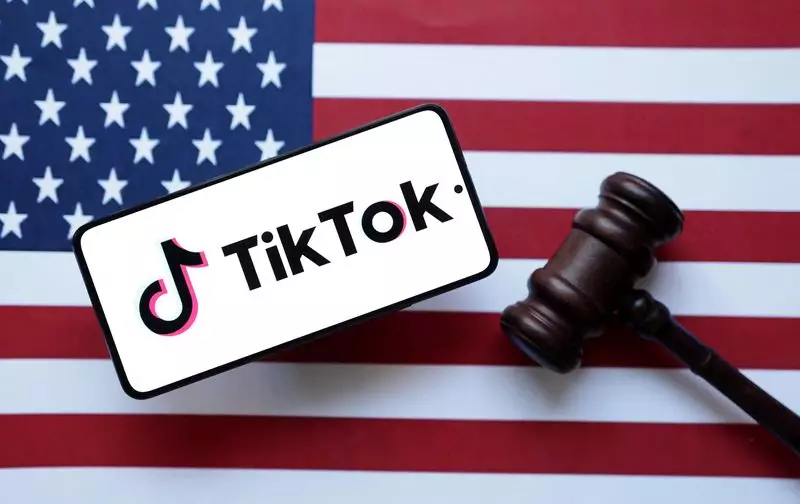The sudden ban of TikTok in the U.S. has sent shockwaves through both social media landscapes and everyday usage patterns. With an estimated 170 million users unable to access the popular app following a Supreme Court decision, the repercussions are likely to be felt far beyond just the digital realm. This article explores the multifaceted implications of this ban—from user experiences and advertising shifts to broader geopolitical tensions with China.
Understanding the Ban: A Legislative Backdrop
The ruling against TikTok stems from national security concerns, emphasizing fears that user data could be accessed by the Chinese government through its parent company, ByteDance. Legislation passed in 2024 mandated that ByteDance sell its U.S. operations or face a complete shutdown by January 19. Although President-elect Donald Trump indicated an intent to seek a “political resolution” to the situation, the path forward remains murky. The immediate consequence is a significant curtailment of the app’s functionalities and availability for both new and existing users within the United States.
For the 170 million U.S. users who have embraced TikTok as a significant part of their daily lives, the ban represents far more than the loss of an app; it signifies the abrupt severance of a digital community. Users unable to download or update TikTok will find that their daily routines, once peppered with short videos and viral challenges, will need to adapt. Efforts to access TikTok through VPNs have already proven futile, leading users to explore alternatives. The migration to other platforms like Instagram and YouTube poses a unique challenge as creators aim to retain their audiences, while simultaneously risking the loss of their established follower base.
Creators, in particular, face the brunt of this upheaval. Many have built careers leveraging TikTok’s algorithm to gain visibility and reach. With TikTok’s ban, these individuals are encouraging their audiences to follow them on different platforms, creating a cultural shift in content consumption that may last long after the ban is lifted or resolved.
The advertising industry, intrinsically linked to social media platforms, finds itself in a precarious position. As businesses scramble to adjust to the TikTok ban, marketing executives are implementing contingency plans to avert disruptions in their campaigns. The term “hair on fire” aptly encapsulates the urgency felt by advertisers, who had been relying on TikTok as a critical channel for audience engagement. With an estimated $11 billion of annual U.S. ad spending up for grabs, platforms like Meta and Snapchat are poised to benefit from this sudden influx of displaced advertising dollars.
However, the ramifications of TikTok’s unavailability extend beyond mere competition for ad dollars. Advertisers must grapple with the challenge of redirecting creative strategies toward alternative platforms while still aligning their brand identity with the rapidly changing digital landscape.
Broader Geopolitical Implications
The TikTok ban adds another layer of complexity to U.S.-China relations. As trade tensions continue to escalate, particularly around technology transfers and practices, this ban serves as a stark reminder of the fraught global landscape. While some analysts speculate that Trump could leverage his position to negotiate favorable terms with China during his presidency, others warn that the ban signals a further deterioration of trust and cooperation. The potential for retaliatory measures from China could further stifle bilateral relations, making future negotiations increasingly difficult.
Looking to the Future: Possibilities and Challenges
Despite the bleak picture painted by the immediate fallout from the ban, there remains room for maneuverability. Discussions around a potential sale of TikTok’s U.S. operations are ongoing, with a variety of players interested in navigating the complexities of ownership. Whether it be billionaire Frank McCourt or transitions involving high-profile figures like Elon Musk, the future ownership landscape, should a deal materialize, could alter the very fabric of how the app functions.
However, TikTok has firmly stated that a sale is not on the table, asserting its independence from forced divestitures. This stance complicates any potential paths forward and raises questions about the long-term sustainability of the platform, particularly in the realms of ownership, operation, and user trust.
The ban on TikTok is not just a fleeting moment in the evolution of social media; it represents a confluence of cultural, economic, and political dynamics that will resonate for years to come. As users, advertisers, and stakeholders navigate this uncharted territory, understanding the multifaceted implications is crucial in determining how and if TikTok can reclaim its place in the digital zeitgeist.

